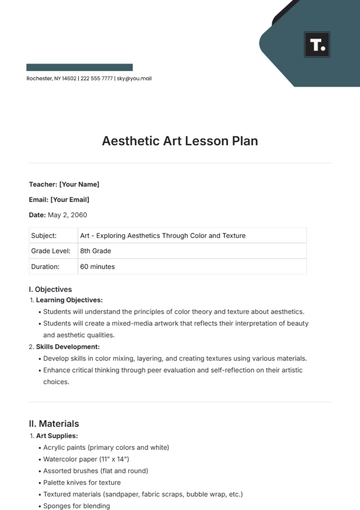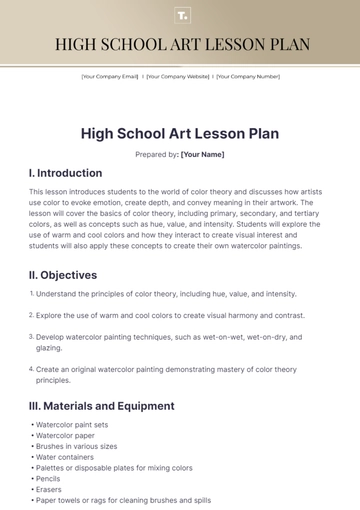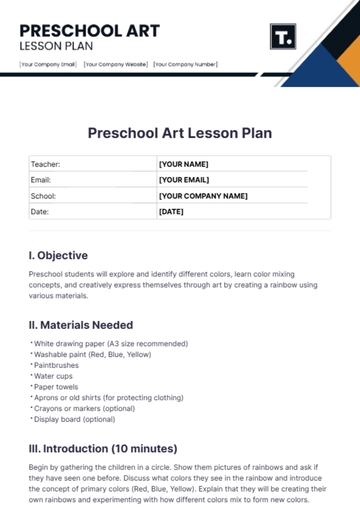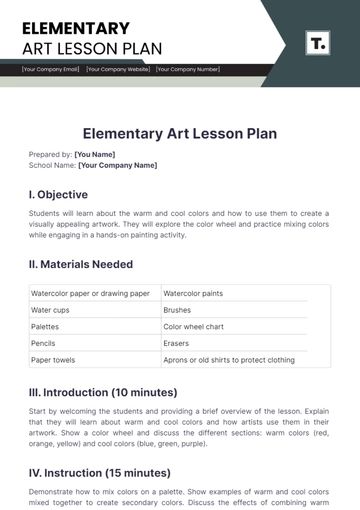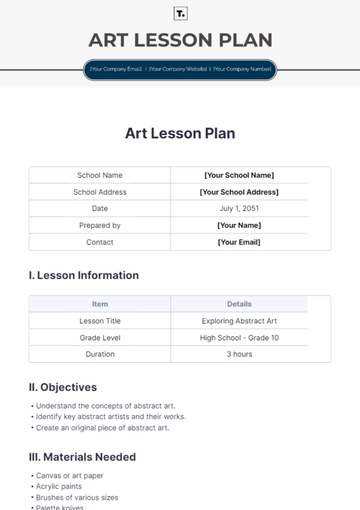Free Preschool Art Lesson Plan
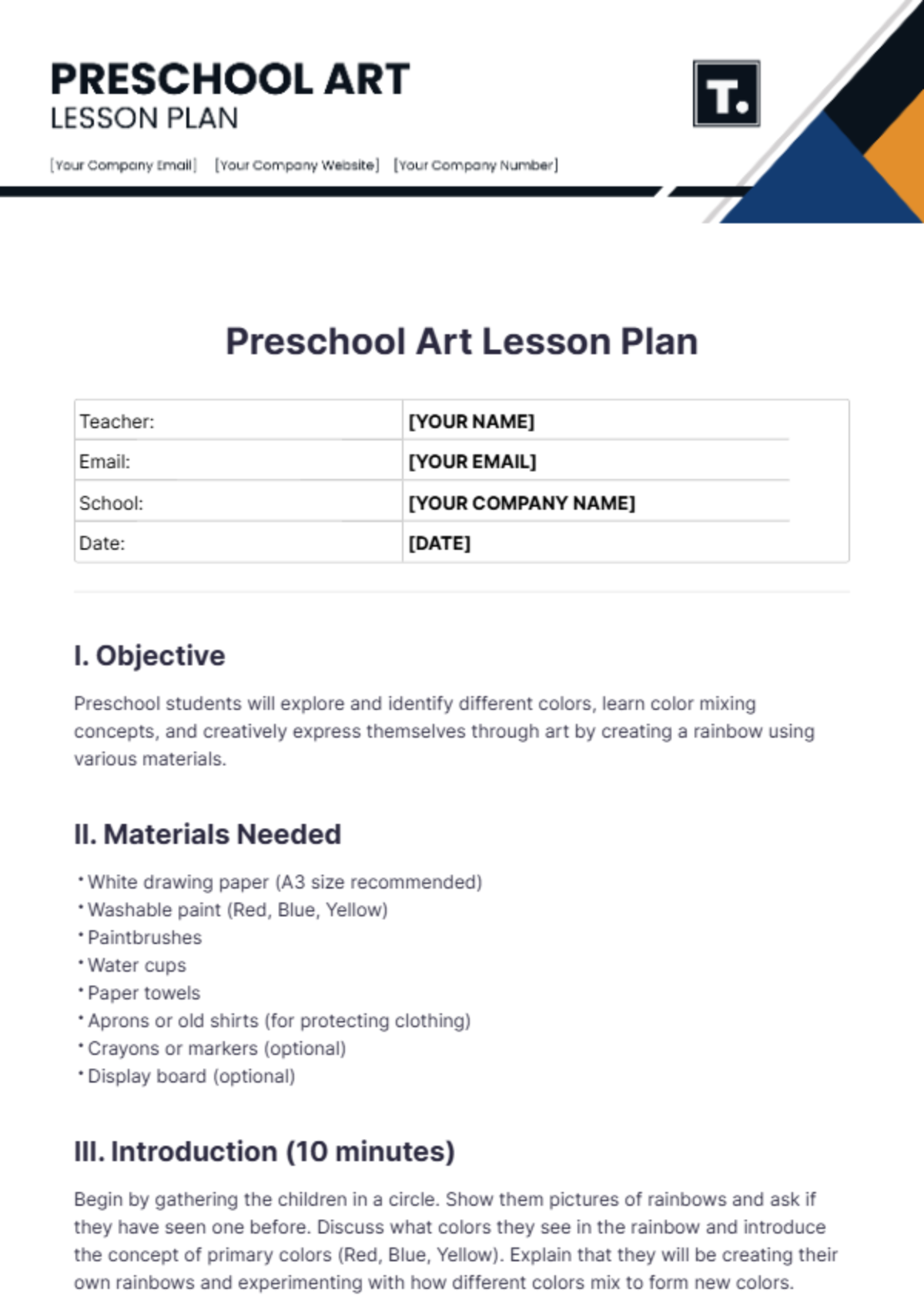
Teacher: | [YOUR NAME] |
Email: | [YOUR EMAIL] |
School: | [YOUR COMPANY NAME] |
Date: | [DATE] |
I. Objective
Preschool students will explore and identify different colors, learn color mixing concepts, and creatively express themselves through art by creating a rainbow using various materials.
II. Materials Needed
White drawing paper (A3 size recommended)
Washable paint (Red, Blue, Yellow)
Paintbrushes
Water cups
Paper towels
Aprons or old shirts (for protecting clothing)
Crayons or markers (optional)
Display board (optional)
III. Introduction (10 minutes)
Begin by gathering the children in a circle. Show them pictures of rainbows and ask if they have seen one before. Discuss what colors they see in the rainbow and introduce the concept of primary colors (Red, Blue, Yellow). Explain that they will be creating their own rainbows and experimenting with how different colors mix to form new colors.
IV. Instruction and Demonstration (15 minutes)
Demonstrate how to use the paintbrush to apply paint to the paper. Show them how red, yellow, and blue can be mixed to create secondary colors (green, orange, and purple).
Explain proper paintbrush cleaning techniques between each color to prevent mixing and unwanted colors.
Show examples of different techniques, such as dabbing, brushing, and swirling, that they can use to paint their rainbows.
V. Activity (30 minutes)
Hand out aprons or old shirts to protect the children's clothes. Distribute the white drawing paper and set up the paints and brushes on the tables.
Encourage the children to start with the primary colors and then experiment with mixing them to create the secondary colors. Remind them to paint in an arc shape to resemble a rainbow.
Allow the children to be creative. If they finish early, offer crayons or markers to add more details to their artwork.
VI. Clean-Up (5 minutes)
Instruct the children on the proper way to clean their brushes and workstations.
Collect all the used materials and ensure all the children's hands are washed.
VII. Reflection and Sharing (10 minutes)
Gather the children back in a circle. Ask them to share their artwork with the group and describe what they did. Discuss the colors they mixed and what new colors they discovered.
Display the children's artwork on a display board or around the classroom for everyone to enjoy.
VIII. Assessment
Observe the children's ability to identify primary and secondary colors. Note their engagement and creativity throughout the activity. Provide positive feedback and encourage their artistic expression.
IX. Extension Activities
Introduce a follow-up activity where children can use playdough or colored paper to create three-dimensional rainbows. Read a book about rainbows or colors to reinforce the concepts learned in the lesson.
This lesson plan was prepared by [Your Name].
- 100% Customizable, free editor
- Access 1 Million+ Templates, photo’s & graphics
- Download or share as a template
- Click and replace photos, graphics, text, backgrounds
- Resize, crop, AI write & more
- Access advanced editor
Unleash the budding Picasso in your preschoolers with our meticulously crafted Preschool Art Lesson Plan, exclusively available on Template.net. This dynamic resource is not just a lesson plan; it's a masterpiece in itself. Fully editable and customizable, it's like having an AI Editable Tool at your fingertips, ensuring every stroke of creativity is nurtured and celebrated.
